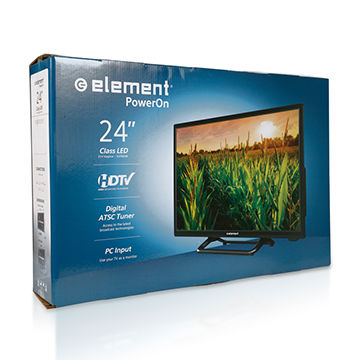Sales Promotion, Digital Marketing, and Packaging (20.2)
- Thiago Casarin Lucenti
- 3 days ago
- 4 min read
Chapter 20 - The Marketing Mix, Promotion and Place
Learning Objectives: To understand sales promotions, digital marketing, and packaging.
After discussing both: the objectives and the methods of advertising (targeted at increasing brand/product awareness) we now need to understand that promotion also include practices targeted at achieving short-term increase in sales - these are called Sales Promotion (below-the-line promotion) methods.
Sales Promotions (below-the-line promotion):

Activities aiming for short-term increase in sales include:
Price offers;
Loyalty or reward programs;
Money-Off Coupons;
BOGOF;
Point-Of-Sales Display;
Money Refunds
These are all focused on encouraging customer decision making and not on giving information (it's the last push).

You should not confuse advertising promotion and sales promotion – they are both forms of promotion, but they are not the same.
Within promotion there are also the so called Direct Promotion Methods:
Direct Mail:

Promotion to potential (target) customers as it excludes non-interested ones;
It brings information on sales promotions;
Tries to be catchy;
May be viewed as junk-mail as many customers now prefer digital communication.
Telemarketing:

- Promotional activities over the phone (selling, market research, promoting products):
- Can be outsourced to an agency;
- Lower cost than personal selling;
- Easy to monitor response/reject rate;
However...
- Many customers dislike it;
- It is easy and common to be rejected.
Personal Selling:

Use of salespeople (high closing rate);
Common for high profit margin products (e.g. cars, real estate);
Expensive form of promotion (one-on-one);
However...
Can be seen as pressure;
Requires training / is expensive to employ.
Development in Digital Promotion: Using technology to deliver communication to customers.
'If you don't pay for a service or product, you are the product. There is no free lunch'.
Social Media Marketing:

- Different social medias are relevant to different segments of the market;
- They can be in the form of advertisements, hashtag campaigns, or influencer marketing.
Email Marketing:

- An effective way to sell more to existing customers or even attract new ones:
Newsletter campaigns;
Purchase confirmation emails;
Thank you emails;
Email notifications about new products.

Online Advertising:
- Pop-up banners;
- Side-view ads on websites;

Smartphone Marketing:
- Messages;
- Application real-time push messages;
- Marketing Bots for message apps.
Search Engine Optimization (SEO):

- Ensuring that a page shows among the first results on a search engine (e.g. Google);
- Through keywords, content, and algorithms optimization.
Viral Marketing:
- To create a short-form content that quickly spreads;
- Uses multiple channels (social medias, websites, etc.);
- Frequently makes use of influencer marketing for gaining quick popularity.
2 Minutes Discussion - Business in Action 20.
Benefits of Digital Promotion:
Worldwide coverage (large potential market size);
Lower cost when compared to traditional marketing;
Easy to track and measure results - web-analytics provide great information on responses;
Can be easily and quickly personalized and changed as the analysis of responses happen;
Builds customer loyalty as social media communication takes place (improves service reputation);
Content marketing can be implemented enabling businesses to gain authority over topics;
Can directly impact sales when digital promotion leads customer to buying online.
Limitations of Digital Promotion:
Can be time-consuming to create and adapt;
Skills and training is necessary as trends quickly change and tools are quickly updated;
Global competition - the access to larger market potentials also applies for other businesses;
Complaints and feedback can become public and damage a brand's reputation if not dealt with properly.
Measuring the Success of Promotions:
Understanding whether promotional activities are successful or not is important for marketers to make future decisions on where/how to invest their promotional resources. There are some common measures used for this assessment:
Comparing before and after sales performance;
Market research on awareness, feedback, and recall on promotional activities customers were exposed to;
Response rate to ads (e.g. number of clicks, number of coupons used (from newspaper/magazine) number of calls, etc.);
Social media feedback/engagement.
Packaging is also considered part of Promotion and it's important for different reasons:
1. Packaging is important for protection and carrying convenience of a product:

2. Packaging is also where customers get information regarding the product (e.g. ingredients, specifications, features, content):
3. Packaging supports the brand image and identity:

4. Packaging also helps product recognition in crowded retailers as well as makes products attractive:
5. Packaging can also aid businesses with other promotional activities (e.g. the red in Coca-Cola's products and blue on Pepsi's) creating a long-lasting impression:

Don't get carried away though:
- Packaging can increase your product price and end up damaging your competitiveness;
- Packaging is also considered, nowadays, a symbol of sustainability (e.g. recyclable and less ostentatious packaging);
As with all other aspects of marketing, packaging decisions need to be blended with the overall objectives of the business for its product.
Choosing a brand name can be tricky and may require the use of specialist agencies to:
- Assess brand brand suitability;
- Check for copyrights;
- Check for unfortunate translations to other languages.
The role of branding in promotion:
- Differentiating products from competitors’ by creating an identification;
- It increases the chances of recognition;
- It creates distinctiveness/differentiation;
- It creates a relatable identity/personality;

- It allows businesses to introduce new products and extensions more easily (brand family name);
- Creates customer loyalty making customers less price sensitive (increased profit margins).
A recent development has led retailers to start developing their own-label brands:

A retailer's brand that is not necessarily manufactured by themselves.
- Such products are usually manufactured by companies that are already in that specific industry;
- It increase competition for themselves, in the industry but...
- Allows such companies to make use of their excess production capacity.
Chapter 20 - The Marketing Mix, Promotion and Place
To-Do-List: Essay Question #1 (a, b)










Comments